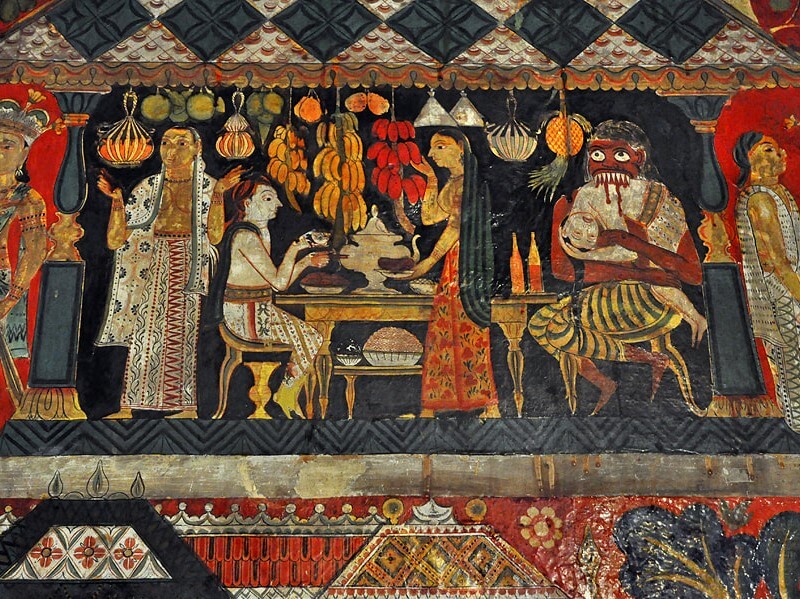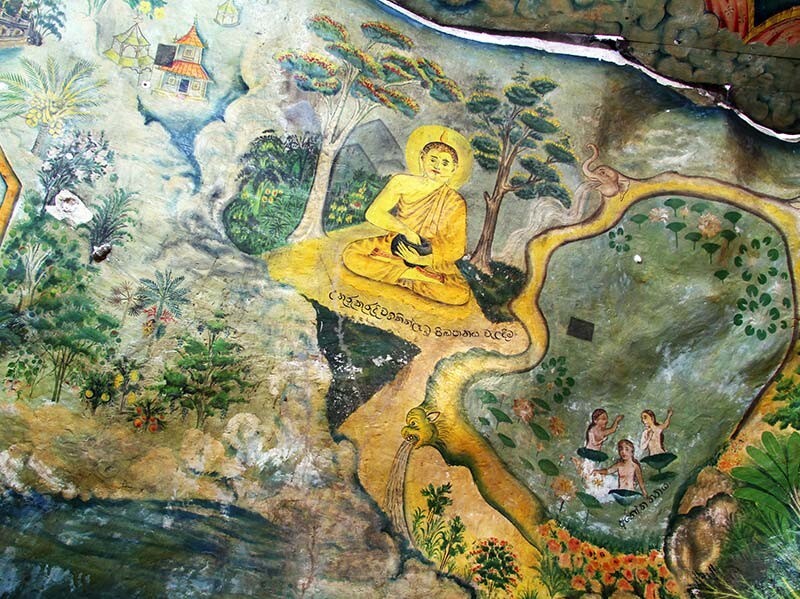Mulkirigala Rock Temple
Mulkirigala Rock Temple, also known as the Raja Maha Viharaya, can be reached by taking the Beliatta-Weeraketiya main road and exiting Mulkirigala Junction. The temple is located 2 kilometers from Mulkirigala Junction. Beliatta Town is accessible via Dikwella or Tangalla.
The Temple
Mulkirigala Rock rises 676 feet above the surrounding land mass. There are seven cave temples spread across five terraced areas of varying altitudes. Lower Terrace (Patha Maluwa), and Bo Tree Terrace ( Bodhi Maluwa). Upper Bo Tree Terrace (Uda Bodhi Maluwa), Great King’s Temple Terrace (Raja Maha Vihara Maluwa), and Chetiya Terrace (Chaitya Maluwa). These terraces are easily accessible via well-paved granite paths and steps leading up to the Dagoba Terrace.
The Cave temples numbering seven consists of Reclined Buddha, Seated Buddha and Standing Buddha Images, paintings of Buddhas, Arhats, Gods and Jataka Stories.
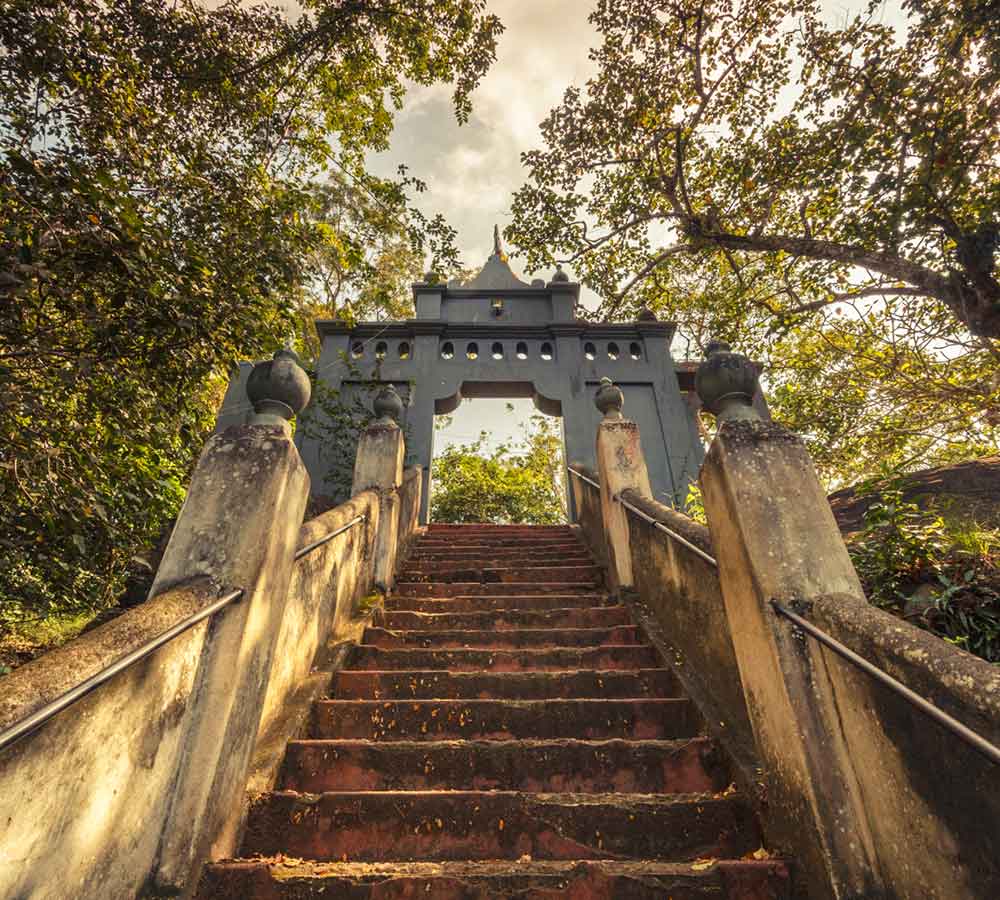
Situated in Giruwa Pattu of Hambanthota District of Southern Sri Lanka, Mulkirigala is also called as Mulgirigala but the former is more prominently used at present. There are many earlier names used for this rock temple such as ‘Samudda Pabbatha”, ‘Muhunadra Giri’, ‘Muhudu Giri’, ‘Giriba Vehera’, ‘Giriba Lena’, ‘Dhakkina Giri’, ‘Dakkina Pabbatha’, ‘Muwatirigala’, ‘Mukirigalla’ and ‘Mulangiriya’.
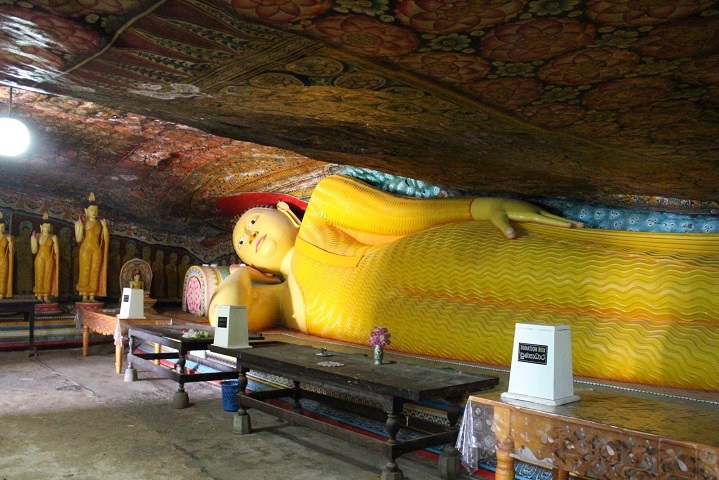
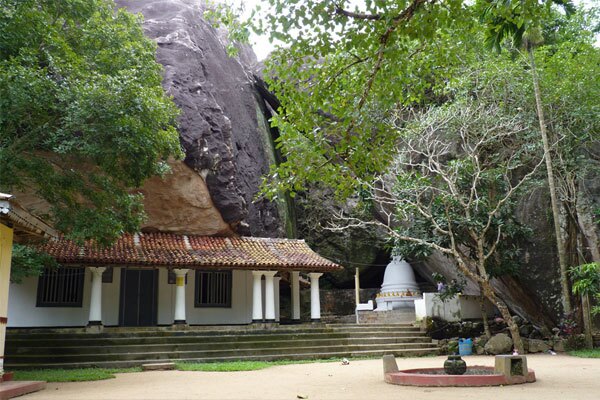
History
The Bo tree on the Upper Terrace is thought to be a shoot from one of the 32 saplings of Anuradhapura Jaya Sri Maga Bodhi planted on the terrace during King Devanam Piyatissa’s reign. Mulkirigala temple is also considered to be one of the 64 temples built by King Kawantissa and was known as ‘Muhudu Gira’ back in the 3rd Century BC. The Chetiya on the Uppermost Terrace is thought to house Lord Buddha relics presented by King Saddhatissa. According to historical manuscripts, the temple was built during the reigns of King Mahanaga, King Kawantissa, King Dutugemunu, King Parakramabahu the Great, King Saddhatissa, King Valagamba, King Jetta Tissa I, and King Parakramabahu I.
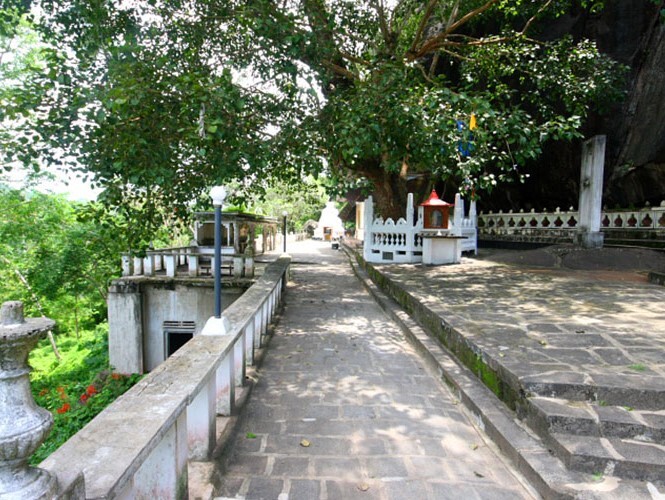
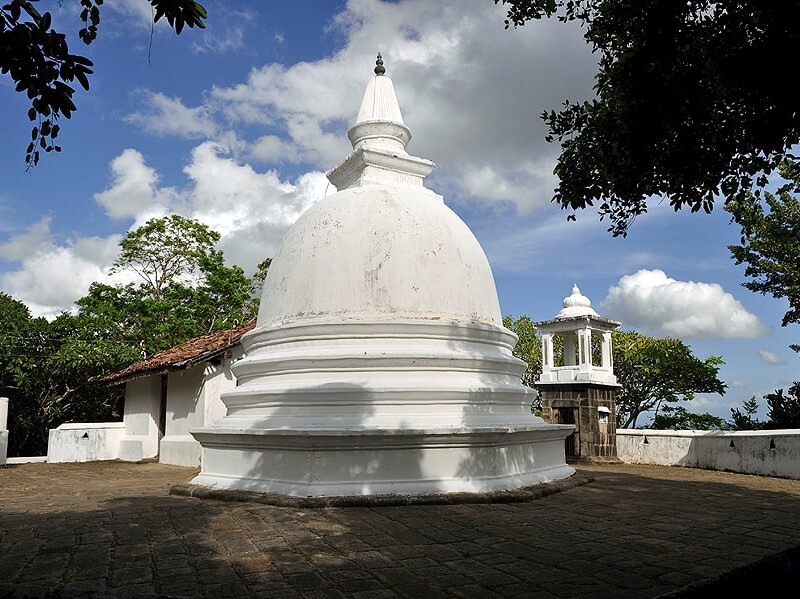
The temples that are still standing today date from the Kandyan era, and the Buddha images and cave paintings depict magnificent examples of Kandyan era arts and crafts. Mulkirigala Rock Temple is one of the few ‘Raja Maha Vihara’ or ‘Temples of the Great Kings’ (of the Kandyan Kingdom) discovered. After being neglected for centuries since the reign of Parakramabahu the Great, King Keerthi Sri Rajasinghe (1747 AD) gave his patronage to rebuild this temple.
